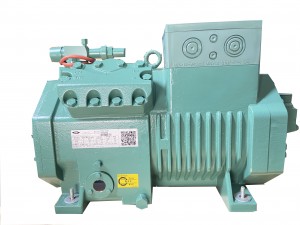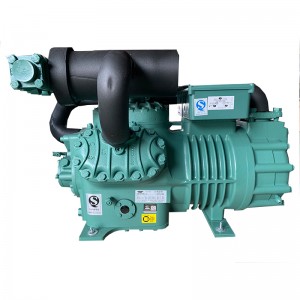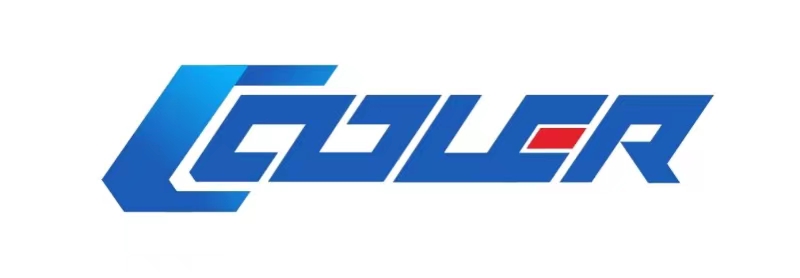Ak sa kompresor chladiarenského zariadenia nespustí, je to väčšinou spôsobené poruchou motora a elektrickej regulácie. Počas údržby je potrebné skontrolovať nielen rôzne komponenty elektrickej regulácie, ale aj napájanie a pripojovacie vedenia.
①Analýza poruchy napájacieho vedenia: Ak sa kompresor nespustí, vo všeobecnosti najskôr skontrolujte napájacie vedenie, napríklad či je prepálená poistka alebo či je uvoľnené vedenie, či odpojenie spôsobuje stratu fázy alebo či je napätie napájacieho zdroja príliš nízke atď. Metóda riešenia problémov: Ak chýba fáza napájacieho zdroja, motor vydáva „bzučivý“ zvuk, ale nespustí sa. Po chvíli sa aktivuje tepelné relé a kontakty sa rozpoja. Na kontrolu, či je poistka prepálená, môžete použiť multimetrovú stupnicu striedavého napätia alebo zmerať napätie na obrazovke. Ak je poistka prepálená, vymeňte ju za poistku s vhodnou kapacitou.

② Analýza poruchy regulátora teploty: Únik chladiva v snímači teploty termostatu alebo porucha termostatu spôsobuje, že kontakt je normálne otvorený.
Riešenie problémov: Otočením gombíka termostatu skontrolujte, či sa kompresor môže spustiť v teplotnom rozsahu * (digitálny * alebo úroveň nepretržitej prevádzky núteného chladenia). Ak sa nespustí, ďalej sledujte, či chladivo v teplotnom sáčku netesní alebo sa ho nedotýka. Skontrolujte, či nedochádza k zlyhaniu bodového pôsobenia atď. Ak je problém menší, je možné ho opraviť. Ak je problém závažný, mal by sa vymeniť za nový termostat rovnakého modelu a špecifikácie.
③ Analýza vyhorenia motora alebo skratu medzi závitmi: Keď sú vinutia motora vyhorené alebo skratované medzi závitmi, poistka sa často opakovane prepáli, najmä keď je spínač lopatiek stlačený nahor. Pri kompresoroch otvoreného typu je v tomto okamihu možné cítiť zápach spáleného smaltovaného drôtu vychádzajúceho z motora.
Metóda riešenia problémov: Pomocou multimetra skontrolujte, či nie sú svorky motora a kryt skratované, a zmerajte hodnotu odporu každej fázy. Ak dôjde ku skratu alebo je odpor určitej fázy malý, znamená to, že vinutie je skratované a izolácia je spálená. Počas kontroly môžete na meranie izolačného odporu použiť aj merač izolačného odporu. Ak je odpor blízky nule, znamená to, že izolačná vrstva je poškodená. Ak je motor spálený, je možné ho vymeniť.

④Analýza porúch regulátora tlaku: Keď je hodnota tlaku regulátora tlaku nesprávne nastavená alebo pružina a iné komponenty regulátora tlaku zlyhajú, regulátor tlaku pracuje v normálnom rozsahu tlaku, normálne zatvorený kontakt je odpojený a kompresor sa nedá spustiť.
Metóda riešenia problémov: Môžete rozobrať kryt skrinky, aby ste zistili, či sa kontakty dajú zatvoriť, alebo použiť multimeter na overenie, či je zabezpečená kontinuita. Ak sa kompresor po manuálnom resete stále nedá spustiť, mali by ste ďalej skontrolovať, či tlak v systéme nie je príliš vysoký alebo príliš nízky. Ak je tlak normálny a regulátor tlaku sa opäť vypne, mali by ste znovu upraviť rozsahy regulácie vysokého a nízkeho tlaku regulátora tlaku alebo vymeniť regulátor tlaku.
⑤ Analýza poruchy stýkača striedavého prúdu alebo medziľahlého relé: Kontakty sú vo všeobecnosti náchylné na prehrievanie, spaľovanie, opotrebovanie atď., čo vedie k slabému kontaktu.
Metóda riešenia problémov: Odstránenie a oprava alebo výmena.
⑥Analýza poruchy tepelného relé: Kontakty tepelného relé sa vypli alebo sa prepálil vodič tepelného odporu.
Metóda riešenia problémov: Keď sa kontakty tepelného relé vypnú, najskôr skontrolujte, či je nastavený prúd správny, a stlačte tlačidlo manuálneho resetu. Ak sa kompresor po spustení nevypne, pred opätovným spustením by sa mala zistiť príčina nadprúdu a opraviť. Stlačte tlačidlo reset. Keď sa kábel vykurovacieho odporu prepáli, tepelné relé by sa malo vymeniť.
Guangxi Cooler Refrigeration Equipment Co.,L td.
Tel./Whatsapp: +8613367611012
Email:karen@coolerfreezerunit.com
Čas uverejnenia: 22. apríla 2024




